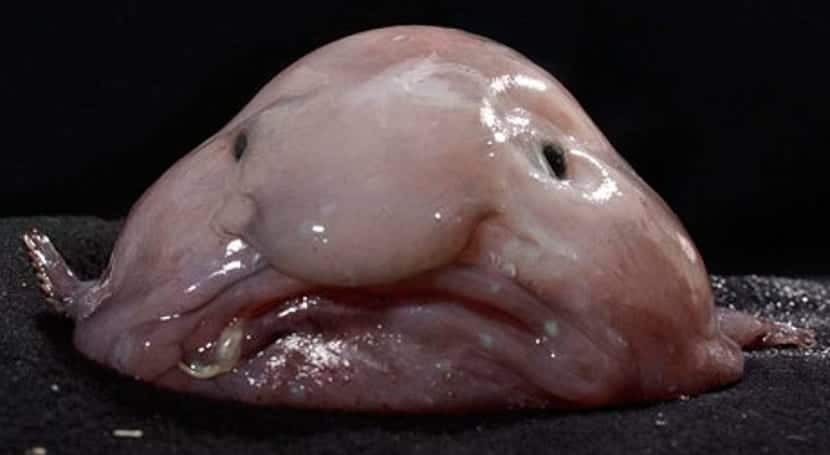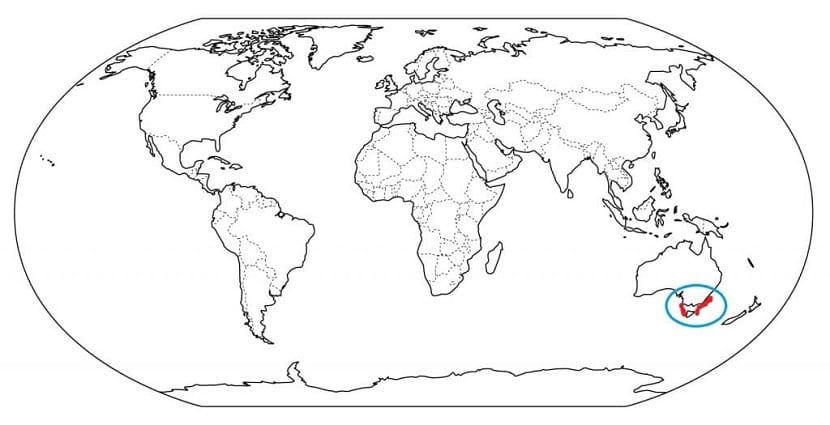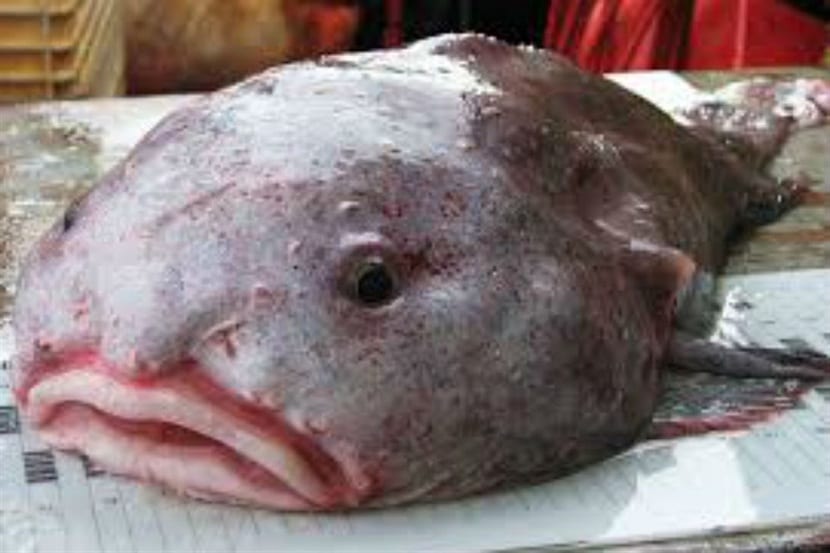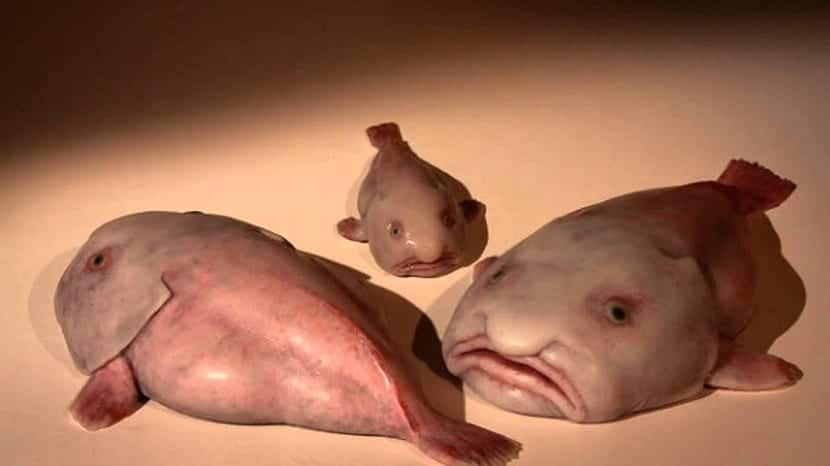
Today we are going to talk about a very special fish. And I say quite special because in 2013 was considered the ugliest animal in the world. It is about the drop fish.
The drop fish, scientific name (Psychrolutes marcidus), is also known as the blob fish or janaira. In English it is known as globfish. Belongs to the family de peces with a fat head and has some characteristics that make it unique in the world of fish. Do you want to know more about the ugliest animal in the world?
Habitat and area of distribution

Dropfish can be found in the deep waters off the mainland of Tasmania and Australia. It is mainly found in these areas, although we can also find it in the waters of New Zealand.
It is a rare fish on the surface, so it is difficult to see it with the naked eye. Typically found at depths between 900 and 1200 meters in which the water pressure is tens of times much higher than the one above sea level. This is one of the reasons why this fish is not very well known.
It is not only considered the ugliest animal in the world for its face or its appearance, but also for its skin. The meat of these fish needs to float and therefore is made up of a gelatinous tissue with a density lower than that of water. Thanks to this less dense skin type, it can float on the ocean floor without losing energy to swim.
Key features

People who have seen this fish say that it looks disgusting and the gelatinous touch is horrendous. It has a cream color and a length of 30 to 38 cm making it a fairly large fish.
By having a body with such low density, they do not have much strength. Therefore, they are not very active species and do not usually hunt their prey. They feed on what they find along the way. Given its extreme rarity, many scientists have come to doubt its true existence, as it seems more like a science fiction movie than reality. But sometimes you have to heed the saying that "the reality exceeds fiction".
It has a very large head and quite narrow fins, both the rear and the tail. It is called a drop fish because it is shaped like a drop of water when it falls. On the head it has a huge, rather pronounced and rounded hanging nose and two eyes placed in the corner where the nose is born. Both the eyes and the nose have a jelly-like texture that makes it grosser.
Regarding density and body mass, it must be said that they are very low to be able to float on the seabed without having to exhaust their energy by swimming. Unlike the rest de peces, he does not have a swim bladder. This organ is common in the vast majority de peces and they use it to be able to stay floating in the water without coming to the surface. It is a vital organ for all fish. However, the blob fish does not have it because it does not need it. With the little mass and density that its body has, it is already enough to stay floating without needing a swim bladder.
Fish are subjected to high pressure from the depths of the water. Thanks to the swim bladder they are able to overcome this pressure without disintegrating. Well, the drop fish has had a different evolution making its body have a lower density. This is the reason why this fish can only inhabit these depths.
At 38 cm in length, it is not that it is too flashy, but it does attract attention when observed the large size of the head with respect to the rest of the body. Thanks to its body structure it is able to withstand very low temperatures. The optimal ones are between 2 and 9 degrees Celsius.
Food and behavior

Since it feeds on what is found on the seabed, its diet is quite varied. They are capable of feeding on all kinds of organisms that are around them. Those that are suspended in the water are the most frequent. We find small crustaceans and mollusks, some organisms and even sea urchins.
Although it does not have teeth to chew food, this fish has no problem when eating any type of food, since they have a digestive system with great absorbent and corrosive potential.
Since the food in these depths of the ocean is not very abundant, the drop fish is floating calmly without exhausting energy waiting to find food. It is not a species that hunts its prey.
Reproduction

The reproduction of this fish, given its area of distribution, is difficult to know. In addition, it is a species discovered not long ago so there is not much information. On some occasions it has been reported that these fish lay their eggs on the seabed and that they remain in the surroundings to protect and monitor them. The pair are placed on top of them in a similar way as birds do.
When the days pass and the young hatch from the eggs, the parents will not separate from them to protect them from predators. They do this because on the seabed there are no algae or rock formations in which the eggs can be protected with the naked eye from the rest. You cannot put sheets to cover them.
When the female lays the eggs, is able to put several thousand of them and their eggs are pink and not white, as is the most common.
Threats of the drop fish

Although these fish live in the depths they are threatened by some actions of the human being. The first is due to the abysmal fisheries of some maritime companies. The trawling technique destroys the seabed and affecting the drop fish, among many other species.
Even if the fish is not completely caught, just moving it out of its depth range can seriously affect its body. Sudden pressure changes seriously affect them.
As you can see, in the deep sea there are all kinds de peces peculiarities that never cease to surprise us.